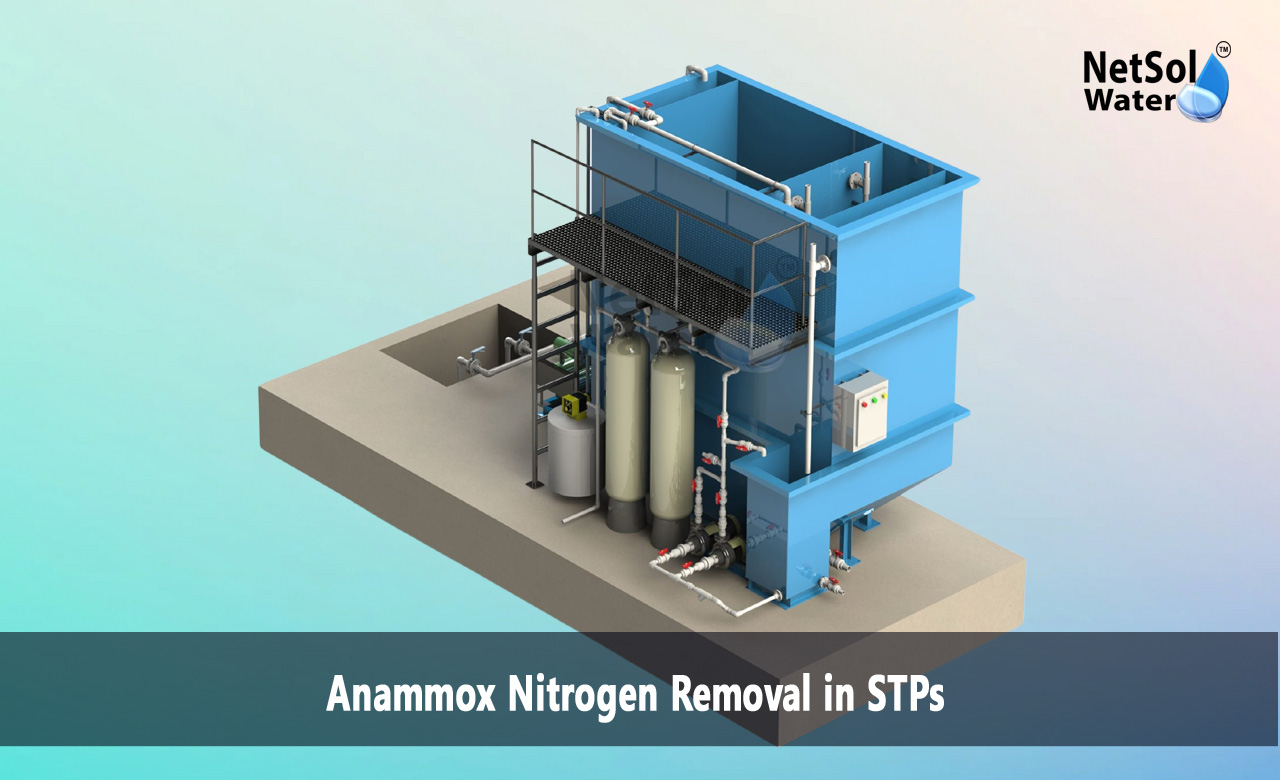How to Remove Anammox Nitrogen in STP Plant?
Anammox Nitrogen Removal in STPs offers a new path to cut nitrogen from wastewater in a simple and lasting way. This process uses bacteria that convert ammonia and nitrite directly into nitrogen gas. This step reduces energy needs and lowers chemical use when compared with older methods. The method also shrinks the footprint of treatment plants and cuts sludge production. These outcomes matter for cities that must meet strict discharge rules and for plants that want to lower costs.
How Anammox Works?
Process Overview
Anammox stands for anaerobic ammonia oxidation. Specialized bacteria combine ammonia with nitrite under low oxygen to yield nitrogen gas. The bacteria form slow-growing biofilms or granules that live in specific reactor zones. These microbes do not need organic carbon to remove nitrogen. That feature frees up oxygen and lowers energy use compared with full nitrification and denitrification cycles.
Key Steps in the Reactor
Plants feed a stream that contains ammonia and nitrite into a reactor zone where oxygen stays low. The anammox bacteria use the nitrite to oxidize the ammonia. The reaction creates nitrogen gas that leaves the water. Operators keep a steady balance of substrates and maintain stable conditions for microbial growth. Careful start up and steady monitoring help avoid performance dips.
Read: Sewage Treatment Plant Manufacturer
Benefits for STPs
Energy and Chemical Savings
Anammox cuts the need for oxygen because it skips full aerobic nitrification. Plants save power on aeration and they reduce the need for added carbon sources that support denitrification. These savings lower monthly operation costs.
Reduced Sludge and Smaller Footprint
The bacteria that drive the process grow slowly and yield less biomass. That outcome reduces sludge handling and disposal needs. The smaller biological mass also allows tighter reactor designs that fit better in existing sites that have little free space.
Faster Compliance with Rules
The method can help plants meet strict nitrogen limits with fewer process steps. Using Anammox Nitrogen Removal in STPs helps plants produce effluent that supports river and coastal health. The approach supports long term planning for urban systems.
Implementation and Reactor Types
Main Reactor Options
Engineers use several reactor formats to host the bacteria. They choose moving bed biofilm reactors for flexibility. They choose granular sludge reactors for high rates in compact tanks. They choose a staged approach when a plant must first convert some ammonia to nitrite.
Integration with Existing Plants
Teams can retrofit existing basins or add side stream units for high strength sidestream flows. Side stream use often treats dewatering liquor from sludge lines where ammonia concentrates. Full mainstream use treats large flows but needs careful control of temperature and loading. Each option sets trade offs for cost start up time and control needs.
Start Up and Scale Up
Teams seed reactors with adapted biomass and then feed low loads while microbes adapt. The slow growth of anammox bacteria means start up takes weeks or months. Good monitoring and staged load increases help keep stable nitrite levels and avoid wash out.
Operational Challenges and Monitoring
Process Control Needs
Operators must balance ammonia and nitrite levels and must avoid oxygen spikes. Temperature and pH also affect activity. Teams use sensors and automated valves to keep conditions within safe ranges.
Troubleshooting and Recovery
If nitrite runs high or biomass drops teams must act fast to prevent damage. Recovery often means lowering load and adjusting feed patterns. Skilled staff and clear SOPs shorten recovery time.
Monitoring Tools
Regular lab tests and on line probes guide decisions. Molecular checks can verify the presence of the right microbes. Data driven control helps keep stable removal rates and reduces surprise failures.
Conclusion
Anammox Nitrogen Removal in STPs can change how plants remove nitrogen by cutting energy use, chemical demand and sludge mass. The method fits both side stream and mainstream uses when teams match reactor type to site needs. Operators must invest in careful start up and in monitoring to keep steady results. For more details on design retrofits or pilot trials reach out to an engineering team that works with modern nitrogen systems. Contact us to request a consultation or to learn how a pilot can prove the benefits at your plant. Anammox Nitrogen Removal in STPs can lower costs and support cleaner water when the plan meets local needs.
Contact Netsol Water at:
Phone: +91-9650608473, Email: enquiry@netsolwater.com



